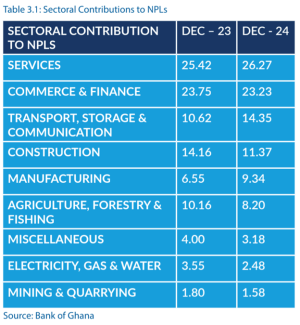
It is only when rains set in with perennial floods that it dawns on all, to ask thousands and one questions why measures are not instituted to avoid recurrence of such disasters.
This is because they keep having the behavior of the proverbial vultures, who think of building their nests only during rains.
FLOODS AND DANGERS
Every year, the volumes of water wasted to floods in cities alongside complicated and poor sanitation problems require holistic measure to manage the waste for future use.
In Ghana, everyone has in one way or the other experienced the negative impact of floods and drought directly or indirectly and the result in lives and property lost still runs fresh in some individual minds.
The impact has often been drastic for farmers who annually suffer low productivity due either to insufficient rains or too much floods, for families whose homes and property wallow in the running water.
Water serves competing purposes, not only for drinking and domestic purposes, but for agricultural, commercial and industrial circles and is key.
For farmers, if their farms will be sustainable and for them to continue to feed their families, communities and the nation at large, then sustainable water is important , same ways as producers who would want to put up their best to ensure that their production raise living standards of every individual.
However, unavailability of sufficient water all year round presents serious impacts on agriculture and the attendant challenges farmers face in getting the right amount of water for crops resulting in low productivity which is a disincentive to other investments in any other developmental agenda.
RAINWATER HARVESTING (RWH)
The practice of rainwater harvesting is not new to most communities. The old ways of filling pots and buckets during rainfall still exist, but modern technologies have proven to improve the harvesting of rainwater in larger volumes and as a country.
However the diffusion of the technologies remain limited. Though we cannot blame the many technical expertise the country has, the need for them to help citizens to harness the water resources to solve rural water supply and sanitation issues and also help families and farmers especially to improve agricultural productivity.
"Rainwater harvesting idefined as; "the accumulation and storage of water for reuse on -site, rather than allowing it to run off".
The Ghana National Water Policy has captured the definition of the term as "collection of rainwater for use in growing crops and for other human use which is done through run off harvesting or roof water harvesting".
With unpredictable climatic conditions and poor rainfall patterns experienced over the years, it is clear that more resilient efforts are needed in managing water resources for a better future and with increasing severity of natural disasters such as floods, the security for water availability for generations is needed now more than ever.
Mr Samson Ahene Tettey, an Engineer with Water Aid Ghana in an interview with the Ghana News Agency noted that many methods abound on how to harvest rain water and noted that as a nation, strategies were needed to harness water resources for better use in future indicating that in spite of the available innovative systems that support water storage, much was not done to fully tap into it.
Most institutions, today in Ghana, use water tanks as main water storage systems, but these institutions mainly depend on pipe borne water only to address situations when taps are not flowing.
The irony also is that most of the public institutions do not have water flowing through their taps in wash rooms for ages either because they were unable to foot their water bills, or the pipelines are old, rusted and chocked with sand that prevent water flow.
In the event that rainwater is properly harnessed at all levels, the challenges could be minimised as rainwater could be reused.
GHANA NATIONAL WATER POLICY
Though there have been efforts as a country to look into alternative ways to ensure strings of reforms were in place to satisfy the consuming population with efficient and accessible water delivery, improved sanitation and hygiene, efforts in harvesting water to increase its availability all time to support the services has not been effective.
The National Water Policy of Ghana spells out the importance of rainwater and indicates that harvesting water has the potential to increase water availability and provide a reasonable amount for households and other institutional water needs and thereby reduce demand on the pipe borne water systems and resources.
According to statistics provided in the policy, the total runoff annually is 56.4 billion m3 (cubic meter) in Ghana, with the Volta River accounting for 41.6 billion m3.
According to the statistics provided in the policy, the mean runoff from Ghana alone accounts for about 40 billion m3 with the Volta, South Eastern and Coastal systems contributing 65 per cent, 29 and 6 per cent respectively of the run off.
This is the reason why efforts should be made to annually ensure a good quantity of the run off is maintained and put to good use and especially for later use.
Though organisations like Water AID Ghana has started the implementation of water harvesting systems in schools and health institutions, especially the CHPS in the upper East Region, more efforts are needed.
MODERN HOUSING EDIFICES
Modern housing edifices in Ghana indicate volumes of water is used during construction. These edifices seen in cities and towns show no indicators for alternative water usage except the usual pipe borne water and in times of water crises constructional works still compete with domestic uses of water.
Mr Ahene Tettey, said serious inroads have to be made to put in place harvesting technologies and added that it is obvious that households could also harvest water. "The reality is that until this adoption of water harvesting is placed on a high agenda, dependence on the scarce resource cannot guarantee sufficiency for the future".
Mr. Tettey said climate change is also taking a toll on water access and added that avoiding the risk of water stress and reaping the multiple development benefits of sustainable water access required better coordination and effective water governance.
To this end, he said every household should be able to harvest rainwater especially, and as most people have moved away from thatched roofs to roofing sheets and other forms roofs with a better surface area, harvesting rainwater is easier and for that matter "there is need for very one to do this". He said.
HARNESSING RWH INTO ONE VILLAGE ONE DAM POLICY
Ghana under President Nana Addo Dankwa Akufo Addo has started the implementation of 'one village one dam policy expected to improve on food security and improve lives in communities.
This comes as a welcome move to address the challenges of communities during and after farming season where lots of youth migrate from the northern to the southern sector to find non -existing jobs.
Creation of the dams is a sure way to sustain many people, including; non- farming because a lot of opportunities have been created for all to find work doing since the programme comes with other attractive farm inputs to explore.
However, because of the erratic nature of rain fall in the north, most water sources dry up even before the next rainy season. Though the 1V1D programme has begun in earnest, there is the need to consider issues of sustainability in the implementation of the projects.
Mr.Tettey, believes that the north need rain water harvesting more, and indicated that it is not only roof top rainwater harvest, but government should invest in the harvest of rainwater from the river beds.
He said when water is available for irrigation during dry season, rural migration to the south will reduce." we can do this and change the economy and also build the livelihoods of our people and poverty can be eradicated". He said.
RECOMMENDATIONS
The one village one dam (1VID) policy should also consider rainwater harvesting seriously as one natural solution to sustain continuous use of the dams since farmers could rely on harvested water to water their crops.
Mr. Tettey indicated that sand dams were other technology for harvesting rain; a situation that water is stored in the soil for farmers to use to irrigate their farms during the dry season to change livelihoods of communities.
Sand dams as means of rain water storage and a source of groundwater recharge are affordable and can easily be maintained by communities.
"A journey of thousand miles starts with a single step" as the adage goes and therefore there is the need for more sensitisation of the general public to push for more people to emulate the strategy whilst there is greater need for government to partner institutions and institute reforms in this area to push for these systems to be in areas where the dams are sited.
There is also the need to build more water reservoirs in all the regions and provide water treatment plants for the recycling of drainage water into reservoirs for usage.
Read Full Story



















Facebook
Twitter
Pinterest
Instagram
Google+
YouTube
LinkedIn
RSS